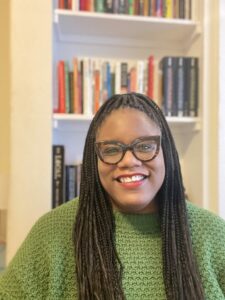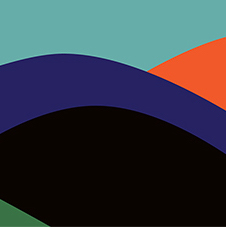
Athena Dixon, author of the nonfiction essay “Distillation,” featured in Volume 70.2 of Shenandoah, discusses horror video games as writing inspiration, finding curiosity in life, and reexamining loneliness during her experience writing The Loneliness Files, in the essay below. Read “Distillation” here.
How do you write a book about loneliness when all the world is at your fingertips? When there isn’t a moment of the day that doesn’t have a notification, a ding, buzz, or alarm? You start with curiosity. Before I wrote The Loneliness Files, I spent days lurking around the internet trying to find remedies for my feelings of drifting and disengagement. I watched ambient sound videos with AI generated scenes, first person videos of real people walking in international cities, mysterious disappearance compilations, and a few true crime podcasts, too. But what helped alleviate the loneliness the most was videogame walkthroughs. Horror ones that had a steady wave of voices from both the game and the player with lots of starting and stopping.
At Dead Of Night was my favorite. The psychological horror game is played through the eyes of a young woman named Maya staying in the haunted Sea View Hotel. The game is terrifying in a way that exists just on the edge of reality. The fear isn’t of Jimmy, the main villain, stalking players through the hotel or the terror of seeing him on the other side of a peephole or as an elevator door slides closed. The true fear comes from a scrying mirror found in one of the room’s drawers. The mirror is one of the tools scattered throughout the game as players unravel the mystery. The quiet horror of it is because of the power it holds. The mirror gives insights about what is to come, but what players do with that information is up to them. The mirror helps players progress and if it is ignored, or even taken for granted, the path ahead is so much more difficult. The deeper Maya delves into the hotel’s mystery, and the closer she gets to the truth, the easier it is for her to follow the scrying mirror. What it shows her becomes more and more real.
When I started writing the essays that would eventually become The Loneliness Files I was scared too. The world was in the murky early days of the global pandemic and I was happy to have a few weeks working from home. But eventually the weeks turned into months and the reality of being alone started to really settle in. I could no longer hide behind my hyper-independence. My scrying mirror became the story of Joyce Carol Vincent and how on the other side of her lonely end was me—a possible reflection of that very same life. I could see that end, a death in front of a glowing television screen and three years before her body was discovered, and how all the same signs were there no matter how I tried to ignore them. I was living in the same kind of orbit all alone and separated from the people and places I held dear—hiding in the silences that such a busy world allows.
I knew that Joyce and I were so very similar. Both of us were Black women, well-educated, and tethered to the world in the appropriate ways. I say Joyce was my scrying mirror because as I started to turn over my own loneliness and pay attention to the echoes and hazy corners of my life, I started down a path that would hopefully make things clearer. I started to write about all the ways these feelings manifested in my life to get away from my fears.
What happens in The Loneliness Files is an unraveling of a story, just the same as with Maya in the game. The more time I spent in reflection, the more I could see the fuller picture. Loneliness wasn’t some kind of enemy or something to be eradicated. It was more about understanding and balancing the isolation and solitude that came along with it, really deciding what of it was useful and what I could leave behind in my pursuit of a greater truth. I no longer had to be afraid of what a lonely death would look like or how easily I could be forgotten as I worked my way through writing the essays. The curiosity of what new thing I would see about myself kept bringing me back to the page, back into a thoughtful processing of the years behind me and those ahead.
I used the story of Joyce, and others like her, as a way to see myself. I ended up writing about fanfiction, the regrets of my childless middle-aged life, deprivation tanks, and so much more in an effort to figure it all out. What became important, more than putting together a manuscript for publication, was to puzzle through my emotions and find the proper vessel for the story. Moving from the macro view of these feelings to a micro view gave me so much insight into the years leading up to March 2020 when the first essay was written. I knew that I wanted to look at both the world at large and the experiences close to my heart so I paid deeper attention to how my loneliness was reflected in the world and how it filtered down into my everyday life. That meant that I had to expose emotions and experiences I’d swept to the side to continue to hold up the illusion that everything was fine. This path of figuring out my loneliness wasn’t always a bad thing. There was most certainly joy in discovery and the acceptance or rejection of what I found out about myself.
And practically the reflections that I used to develop the essays helped me home in on the proper vessel for the stories I wanted to tell. My life, and how I navigate those experiences, is fragmented so it made sense to use linked essays to express my discoveries and my curiosity. The vessel of the stories I wanted to tell about myself and those I researched for the collection were just as important as the content in some ways. I wanted to find a proper balance of the personal and the social as well as the internal versus the external. So, I followed the path laid out before me via the mirror of Joyce’s past and my possible future—chasing down my curiosity until everything came into focus.
